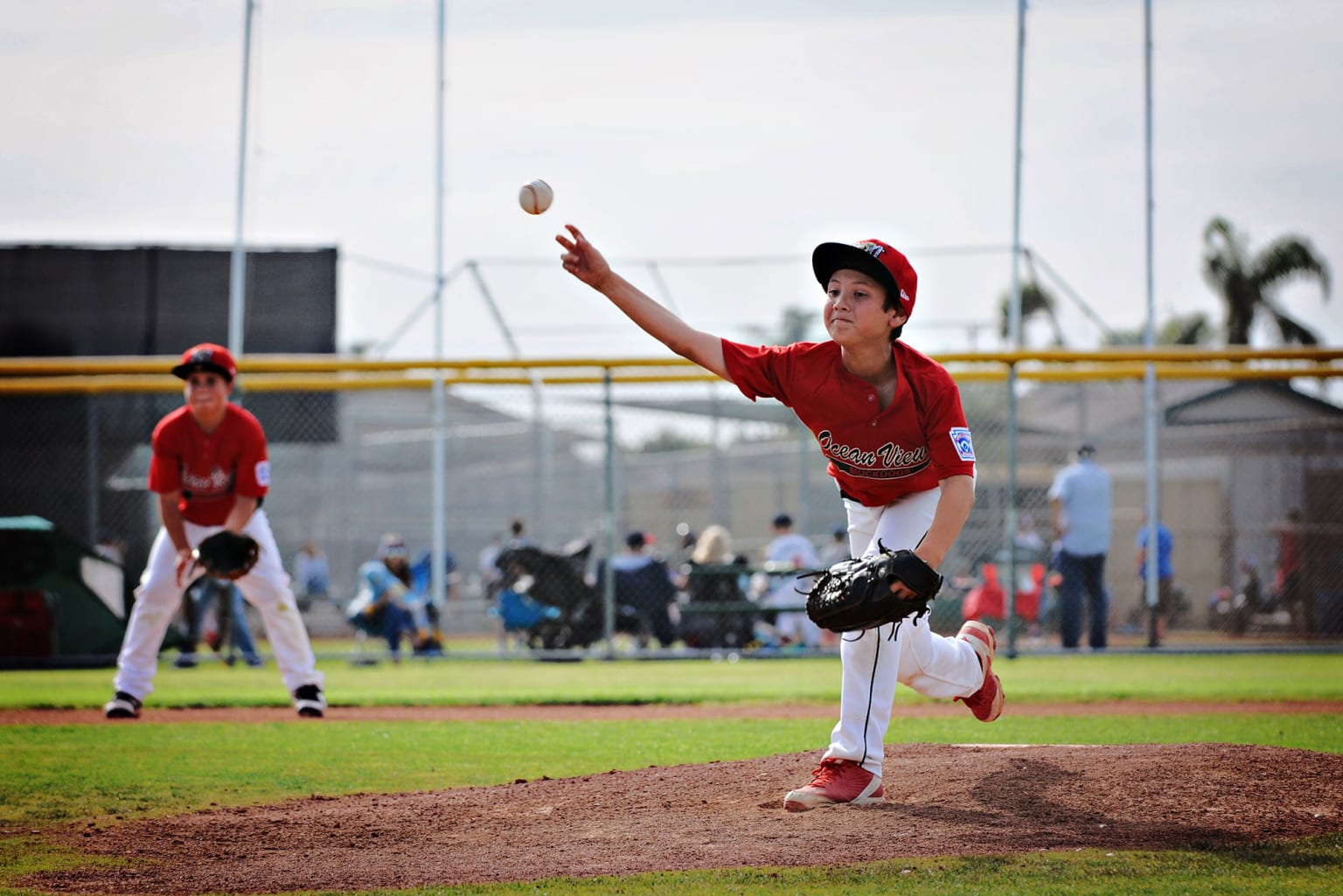Coaching Young Pitchers in Baseball – Keep It Simple

Properly coaching a pitcher is hard, but that task is far less difficult than actually pitching. Imagine what it is like to be a young pitcher trying to learn the most challenging position on the field. In all likelihood, pitchers receive instruction from a variety of sources like parents, grandparents, family friends, their own pals, and multiple adults in the dugout. Coaches need to be careful not to over-instruct young pitchers. Too many voices and too many conflicting pieces of advice will lead to player confusion and frustration, which will ultimately produce fewer positive results on the hill. For coaches, it’s best to identify basic tips to revisit time and time again in order to produce a successful hurler. Here are some tried and true simple examples:
Balance
If a pitcher is off balance, it will be hard to find the plate on a consistent basis. Without having a ball in hand, practice having your Little Leaguer® go into a leg kick from the stretch position with his base foot set to push off of the rubber. Have him hold the leg kick at the top for a second, and then return his foot to the starting spot on the ground. Repeat this ten times, and then do the same drill from the windup position. If your Little Leaguer is having difficulty in a game or at practice, pay close attention to his balance. Does the plant leg produce a strong foundation? If not, remind the pitcher about maintaining proper balance.
Push Off the Rubber
It’s important for pitchers to push off the rubber on delivery. Pushing off the rubber not only produces extra velocity, but it also creates added balance, which produces better control. Remind pitchers to not just stand in front of the rubber, but push off it on every pitch. This will allow your hurler to feel like he’s pitching “downhill.”
Follow Through Across the Body
Some Little League® pitchers have a tendency to stop their follow-through short. This often leads to high pitches. Instruct your pitcher to follow through across the body and end low. If your pitcher is walking batters with balls that are consistently high, check to see if the follow-through is too short. Also, be sure to instruct your pitchers to get their chest out over the front knee at the ball’s release.
Finish Toward the Plate
One common mistake is for pitchers to finish their delivery and “fall off” the mound to one side. Instruct your pitchers to finish toward the plate. A solid practice tip is to make a mark on the mound where you feel your Little Leaguer’s landing foot should hit.
Make the Batter Invisible
Every coach knows that a pitcher could be lights out without a hitter in the box, but once a player steps in, a pitcher’s control is often less effective. It’s easier said than done, but tell your pitcher to just concentrate on the catcher’s mitt, and pretend the hitter is invisible. Try to convince your Little Leaguer that it is just him and his teammate behind the plate playing a game of catch.
It’s important to not overwhelm pitchers with too much detailed advice, especially early on the season. Over the course of the year, you can add in extra instruction like shoulder position, not opening up, and arm slots, but ONLY when the pitcher is ready for it. You are not instructing a professional whose craft it is to pitch. Keeping it simple will provide solid results, which makes the game more fun.
Just as important, remember, you are the coach. Your responsibility is to teach, and have your Little Leaguer follow YOUR instruction. If a pitcher is getting too much advice from others, you need to speak to them to make sure what is being discussed is in line with what you are teaching. As always, stress arm safety, and don’t be afraid to allow more of your players to try some time on the mound.